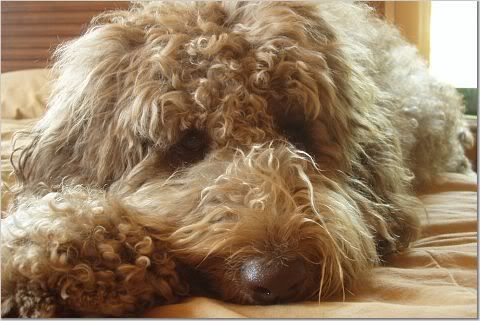FDA Compliance Policy For Animal Food From Downed Cattle Is 20 Years OldRecycling is good,
according to Jason Fagot, general manager of
Nebraska By-Products. In this case, Fagot is talking about recycling carcasses from dead livestock.
Nebraska By-Products is a rendering operation that collects dead animals from farmers and ranchers, and renders their carcasses into useful items – such as tallow (for use in soaps) and meat & bone meal, which can be used in animal feed. For the last dozen years, Nebraska By-Products also has been recovering meat from the beef carcasses, denaturing it, and selling the meat under its Happy Hounds label to greyhound racing stables, farms and sled dog racers.
The Nebraska By-Products story appeared on KearneyHub.com, a Kearney, Nebraska news site. Susan Thixton, of TruthaboutPetFood.com, noticed the article and queried the legality of selling denatured meat as animal food. After all, as Thixton pointed out in her post, "Federal law states that no food (human or animal) can contain any part of a diseased animal or an animal that has died other than by slaughter."
Unfortunately, it's not that simple. FDA's actions are guided by three separate elements: the Federal Food, Drug and Cosmetic Act; Title 21 of the Code of Federal Regulations; and the agency's internal Compliance Policy Guidance Manual. I contacted FDA's Center for Veterinary Medicine (CVM) earlier today, and learned that the following policy has been in effect since 1989:Sec. 690.500 Uncooked Meat for Animal Food (CPG 7126.23)
BACKGROUND:
*CVM is aware of the sale of dead, dying, disabled, or diseased (4-D) animals to salvagers for use as animal food. Meat from these carcasses is boned and the meat is packaged or frozen without heat processing. The raw, frozen meat is shipped for use by several industries, including pet food manufacturers, zoos, greyhound kennels, and mink ranches. This meat may present a potential health hazard to the animals that consume it and to the people who handle it.*
POLICY
*Uncooked meat derived from 4-D animals is adulterated under Section 402(a)(5) of the Act, and its shipment in interstate commerce for animal food use is subject to appropriate regulatory action.*
REGULATORY ACTION GUIDANCE
*Districts should conduct preliminary investigations only as follow-up to complaints or reports of injuries and should contact CVM before expending substantial resources. Before the districts recommend regulatory action, they should contact Case Guidance Branch, HFV-236, for advice and assistance with case development.*
*Material between asterisks is new or revised*
Issued: 4/5/79
Reissued: 10/1/80
Revised: 5/23/89
According to Laura Alvey, Deputy Director of CVM's Communications Staff, "... if FDA does not receive complaints of adverse events from such products, no action is taken, and pet food companies are allowed to use such meat and animal tissues under a policy of 'enforcement discretion'."
"When the CPG was last modified in 1989," Alvey added, "the use of raw diets for dogs was limited almost exclusively to the dog racing industry. In 1989, most animal tissues used in pet foods that originated from animals that had died otherwise than by slaughter or that were declared inedible for people were processed by thermal methods. The Center for Veterinary Medicine recognized that these thermal processing methods were capable of killing pathogenic organisms."
Of course, raw diets for dogs have become more popular in the 20 years since FDA's Compliance Policy was last updated. The agency recognized this in 2004, when the Center for Veterinary Medicine published its Guidance Document #122, "Manufacture and Labeling of Raw Meat Foods for Companion and Captive Noncompanion Carnivores and Omnivores."
Unfortunately, though, it seems that – for now, at least – FDA's policy towards the use as of meat from "fallen animals" as dog food is one of Don't Ask, Don't Tell.






No comments:
Post a Comment
Note: Only a member of this blog may post a comment.